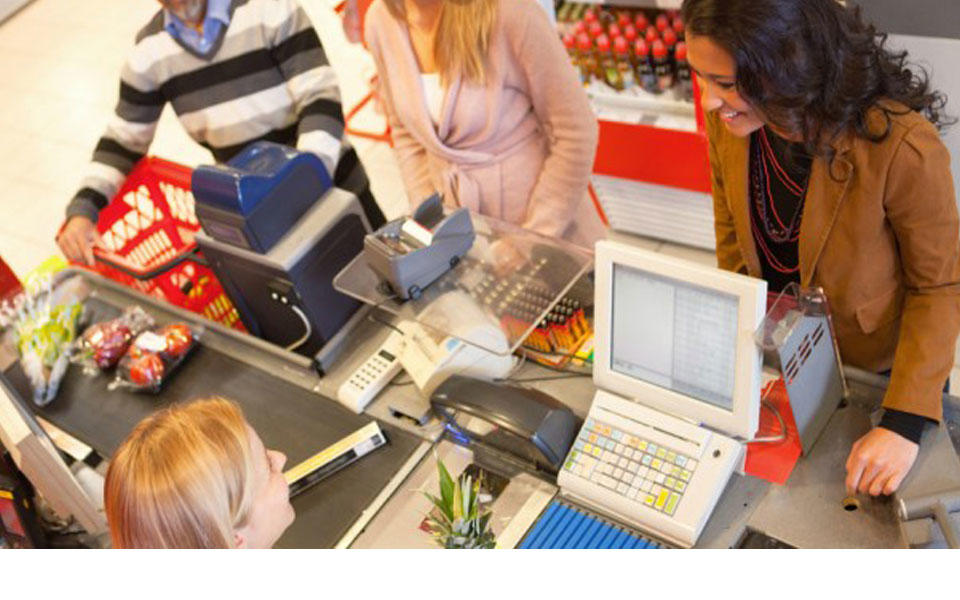Taking Measure
Just a Standard Blog

Like many of you, I venture out on Saturday mornings to get groceries and gas. Until my college years, I never thought much about whether or not I paid the right amount at the pump, if the supermarket scale was correct, or if packaged foods actually contained the amount of product stated on the package. It was not until I took a position with the Maryland Weights and Measures (W&M) program, first as a field inspector and then as a metrologist, that I learned about how the U.S. weights and measures system lays the foundation for fair commerce.
Now, as a physical scientist with the NIST Office of Weights and Measures, I have the opportunity to look at weights and measures from a national perspective. This has given me an even greater appreciation for the contributions of the U.S. weights and measures system to the U.S. economy. As we celebrate Weights and Measures Week, which is the first week in March, I want to reflect on how the U.S. weights and measures system is necessary for fair trade between buyer and seller in two commercial areas: at the gas pump and in the supermarket.
Back when I was a weights and measures inspector, I used a set of specially made weights to test scales at the supermarket by comparing the weight indicated by the scale to the known weights that I placed on the scale. The scale had to indicate the amount of weight on the scale to within a certain tolerance. I also made sure that the scale and register computed the correct price when a customer’s apples, oranges or other products were weighed. I even carried my own scale to weigh the contents of packaged foods to make sure they contained as much product as stated on the package.
At the gas station, I tested gas pumps with a container that had a known volume called a ”test measure.” I typically pumped 5 or 10 gallons of gas into the test measure just like a customer pumps gas into his or her car. I compared the amount of gas in the test measure to the volume reading on the gas pump to make sure that they were the same within a certain tolerance.
Gas pumps, scales and all weighing and measuring devices are required to be set as close to zero as possible. However, just as no person is perfect, neither is a piece of equipment, and after continuous use there is typically some drift. But devices are not allowed to be off by more than the allowed tolerance—the small amount that a gas pump, scale, or any other device used to weigh or measure things for sale can be in error. At the gas pump, for 5-gallons, the tolerance is typically about 98 milliliters, or a little more than one-third of a cup. For scales in a supermarket the tolerance at 2 lb is typically 0.01 lb.
At both the supermarket and the gas station, I made sure that customers were getting what they paid for. I found that most businesses welcomed my presence because the results of the tests I performed also let the seller know if they were receiving fair payment for the products they sold.
An economy without fair competition is bad for business.
Consider this scenario: A customer is purchasing a T-bone steak at a supermarket. When the steak is weighed, the scale used to weigh the steak indicates 2 lb but the correct weight indication should be 2.25 lb. This means that the customer is receiving a quarter-pound more steak than they should. If 20 customers per day got this “deal,” the business would lose $54 every day. That adds up to $20,000 a year, a real dent in any business’, and especially a small business’, bottom line.
At first glance, what I did as an inspector may seem very simple, but what I’ve described is really just the tip of the iceberg of all the work it took to keep commerce in my state fair and flourishing. Gas pumps, scales and retail package inspection are just three examples of what inspectors are responsible for. Requirements for testing many other types of commercial measurement devices are included in NIST Handbook (HB) 44, “Specifications, Tolerances, and Other Technical Requirements of Weighing and Measuring Devices” and inspecting many other types of packages are included in NIST HB 133, “Checking the Net Contents of Packaged Goods.”
NIST is non-regulatory, so we don’t inspect or test devices or packages, but we do publish these handbooks for state weights and measures inspectors to adopt and use, ensuring uniformity in inspections and testing throughout the U.S.
The U.S. weights and measures system is complex. Maintaining equity between the buyer and seller during commercial transactions requires the cooperation of the NIST Office of Weights and Measures, state weights and measures programs, the National Conference on Weights and Measures (NCWM), industry and consumer groups, and many other federal agencies.
I still go to the supermarket and gas station on Saturdays, but I am now armed with the knowledge, (and I hope you are as well), that there is a system in place that protects all interests in the marketplace, and that system is essential to keeping our economy strong.
Happy Weights and Measures Week!
About the author
Related Posts
Comments
- Reply





